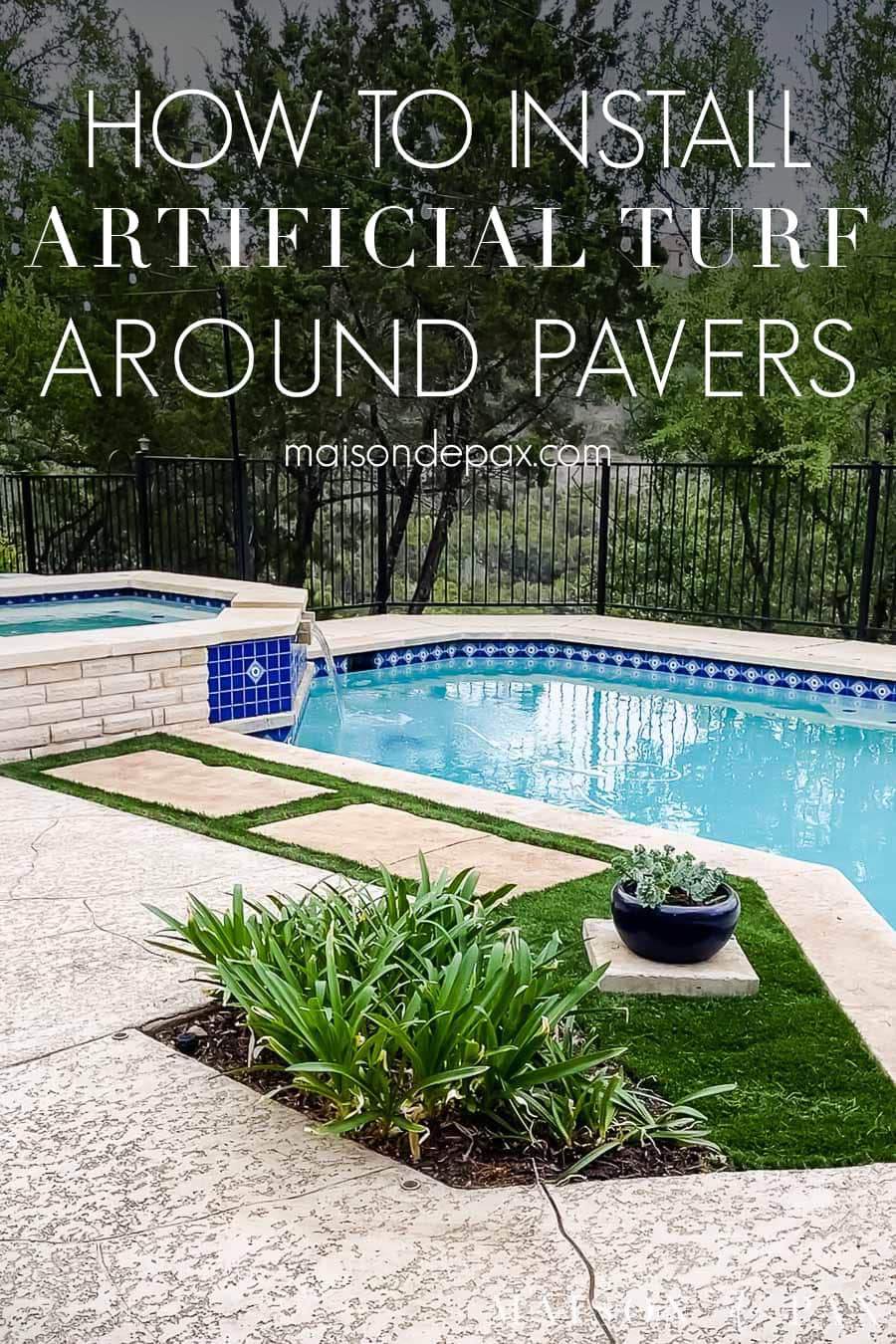Table of Contents
Don’t miss this step by step tutorial for installing artificial turf grass with large pavers for a beautiful, maintenance-free landscape!
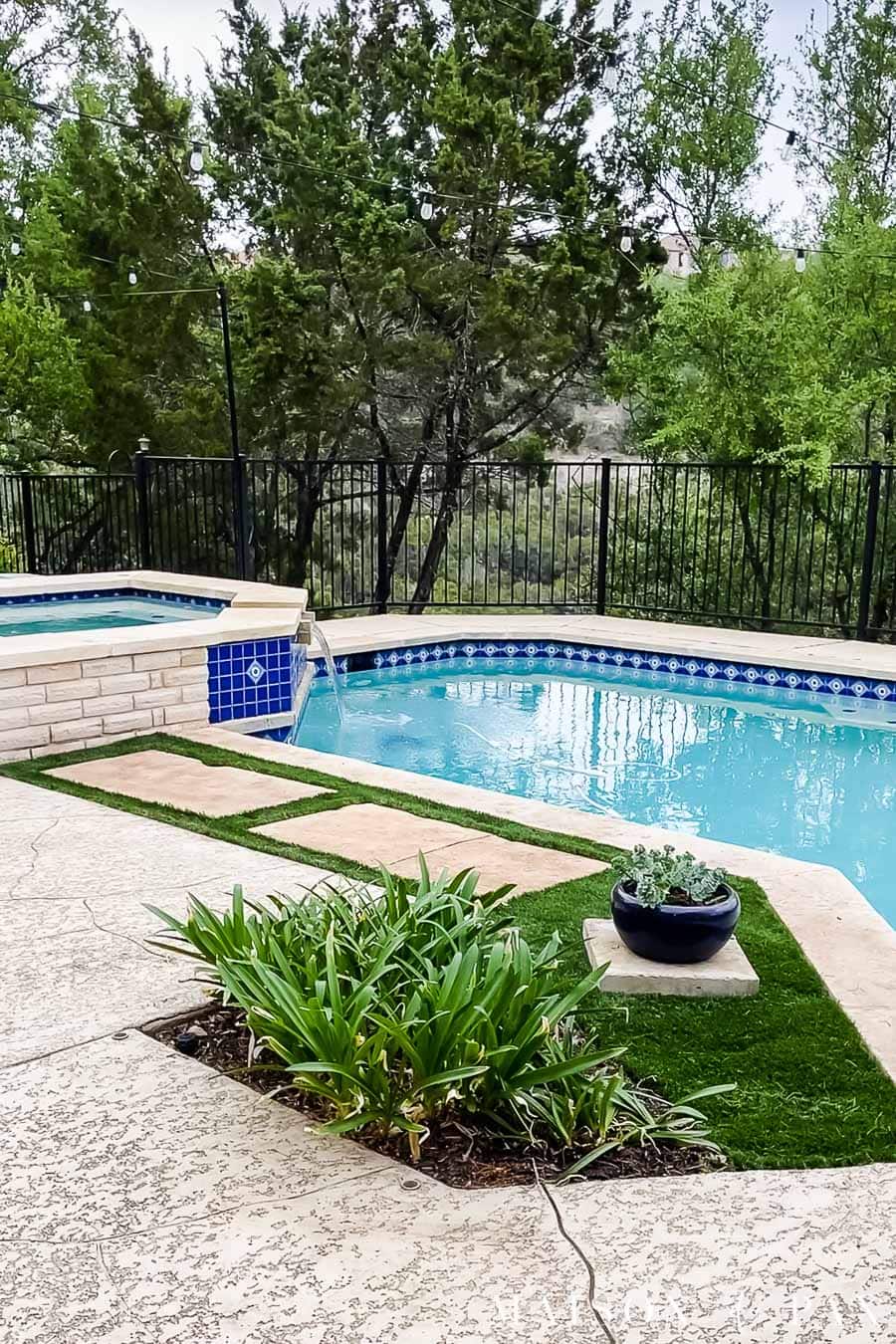
The previous owners of our home installed a flower bed beside the pool. It sounds like a great idea to break up the sea of concrete (and I do love that feature), but practically it proved difficult to maintain. So we decided to install stepping stones with artificial turf to maintain the green space while making it functional and maintenance free.
I shared the project on Instagram recently and got a slew of questions about how we did it. So today, I’m sharing a detailed tutorial on how to install artificial grass with stepping stones.
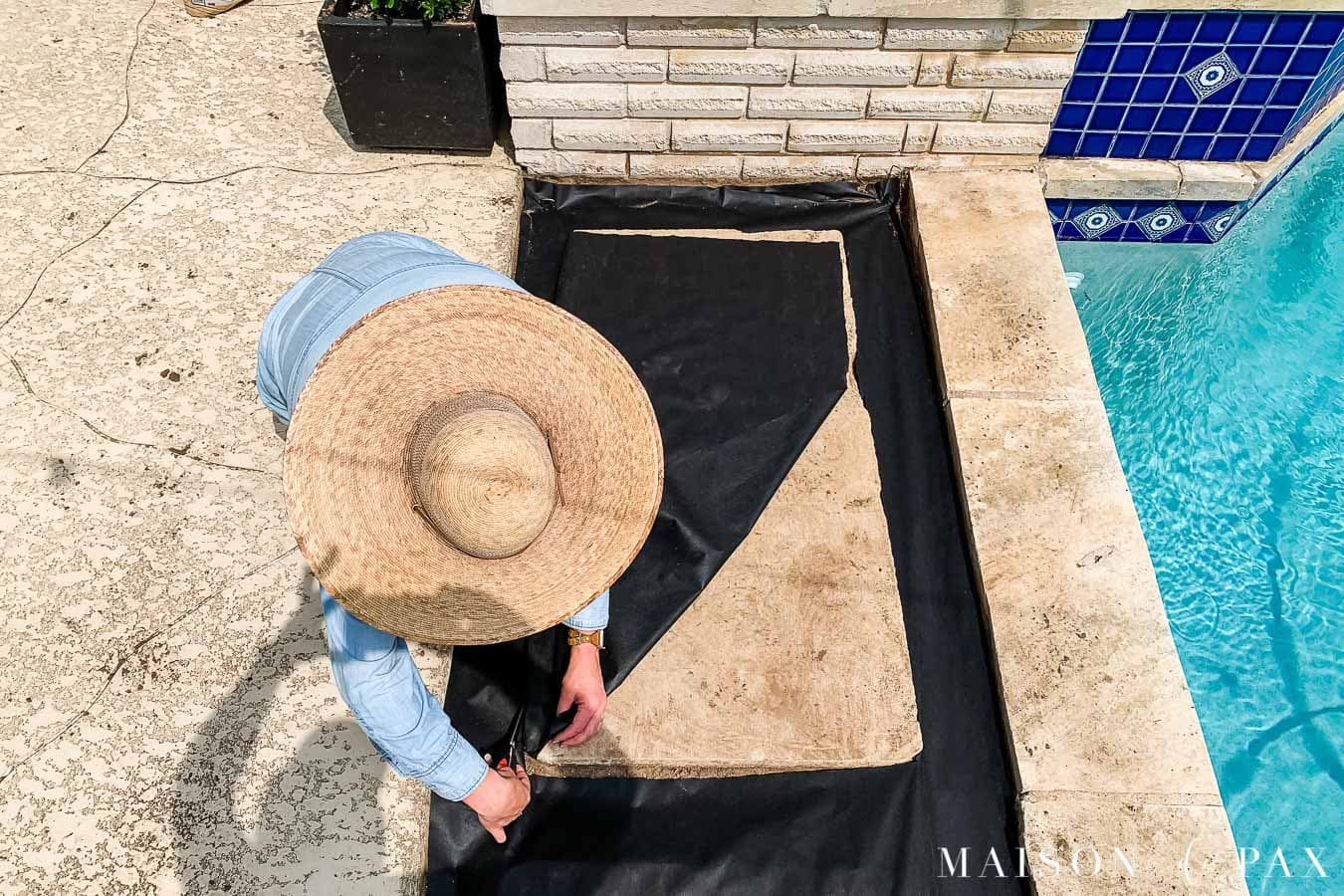
Why Install Artificial Turf?
There are many great reasons to install artificial grass, and since it has come a loooonnnng way from the plastic astroturf of old, it can be a beautiful landscaping option.
First, personally, we were struggling to get anything green to grow in the small bed by the pool. There were originally some large bushes there, and though they looked lovely, they blocked the view of the pool. With little kids, it was a safety issue not to be able to see them while swimming.
We replaced the bushes with large limestone pavers, and we tried growing some ground cover around them… big fail. Instead, we had mud right beside the pool. Artificial turf gave us the green space we craved without having to battle the dirt and mud while grass struggled to grow.
So whether you as homeowners are looking for a low-maintenance yard, freedom from weeds, or a small section of grass where grass won’t grow, artificial turf just might be the perfect option!
How to Install Artificial Grass with Pavers
Let me point out that we wanted a simple, DIY option for laying turf. We went with products we found in stock and did not rent any major power tools.
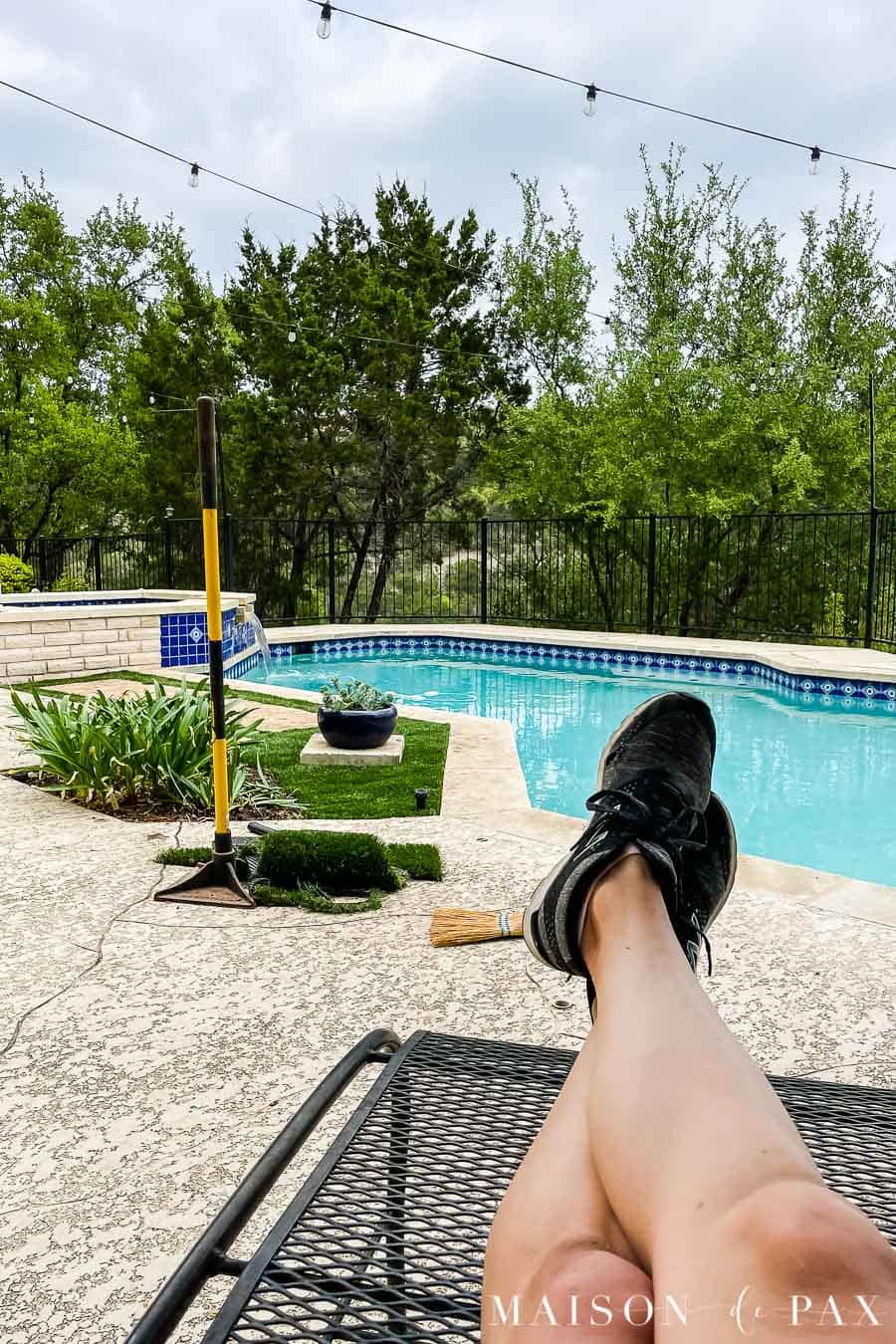
If your project is significantly larger, you may want to consider hiring a professional or at least renting tools like a vibrating plate compactor, as proper compaction is very important for large areas of artificial lawn.
For our project, we simply wanted a small walkway area by our pool, so these steps are best for a smaller space and include instructions for working around stepping stones.
We did this in a single afternoon and have been SO happy with the outcome for our space! Here’s exactly how we did it.
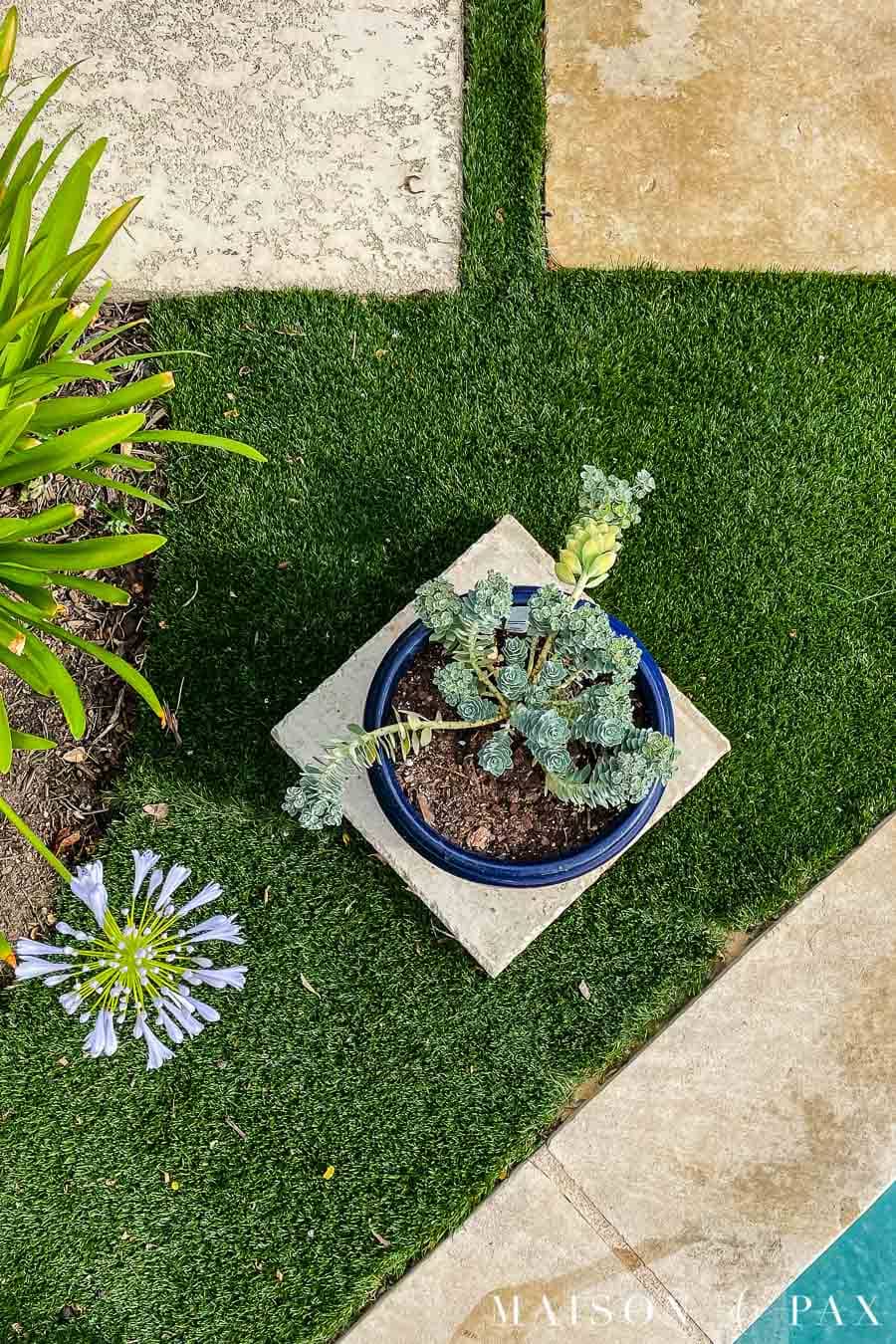
Materials Needed:
This post contains affiliate links. Click here to read my full disclosure.
How to lay an artificial turf walkway with stepping stones:
1. Dig down previous surface level if needed
If your previous surface (existing grass or dirt) was at the desired finished level, then you will need to dig down 2-3 inches to allow for the new turf and underlay.
Note: we actually laid our stepping stones about a year before we decided to add turf, but the base preparation for stones and turf is similar, so I’m writing instructions for doing it all together.
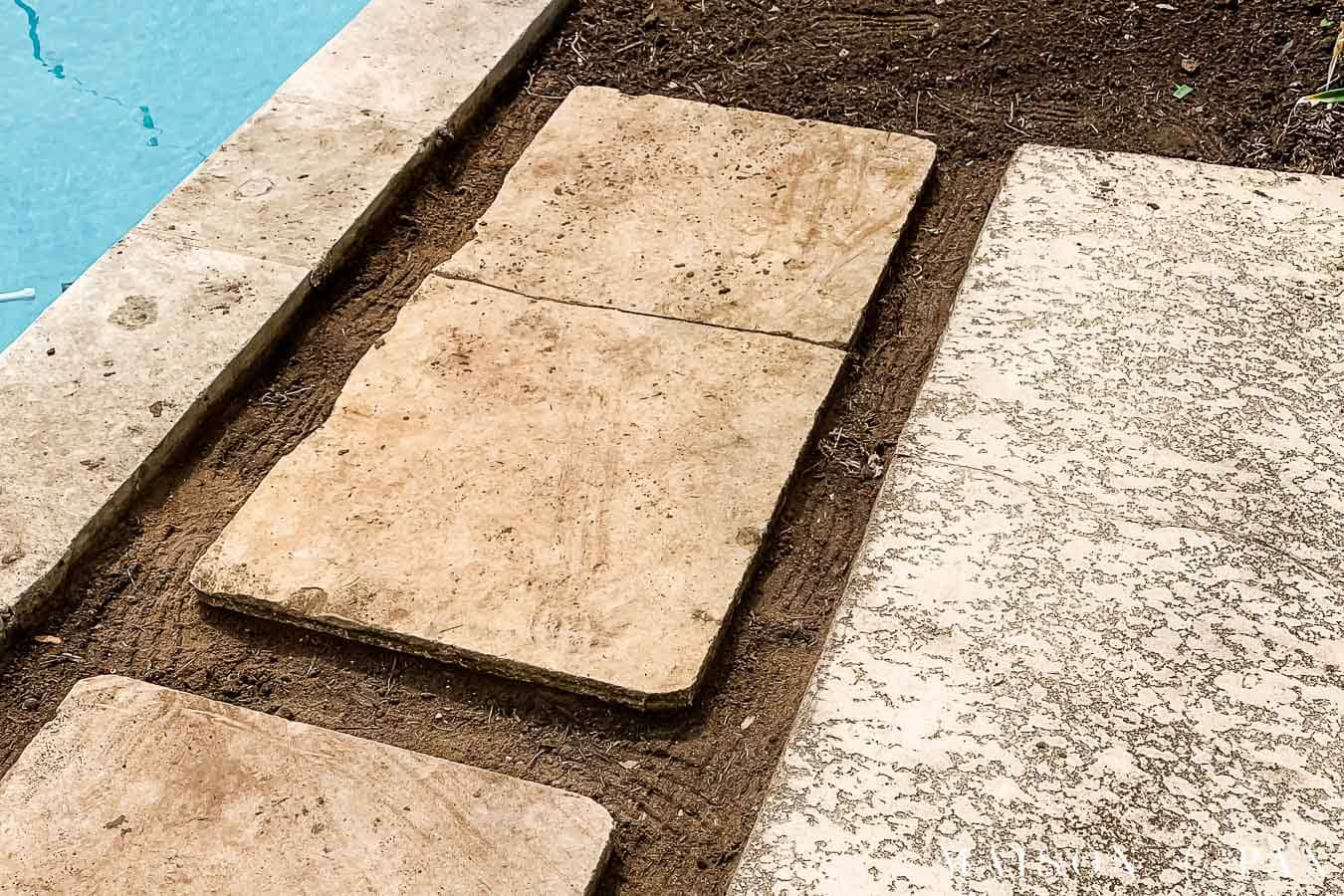
2. Level existing surface.
Use a long level to ensure that your turf won’t have an uneven surface. This step does not have to be perfect, as you will have another chance to level after the infill.
3. Lay down weed barrier.
This is optional, but it seemed wise to use to try to prevent any weeds from growing through our beautiful new “grass.” We used lawn staples to secure the weed membrane temporarily and then pulled them out once the sand was in place (the final lawn staples will hold the weed barrier as well as the turf).
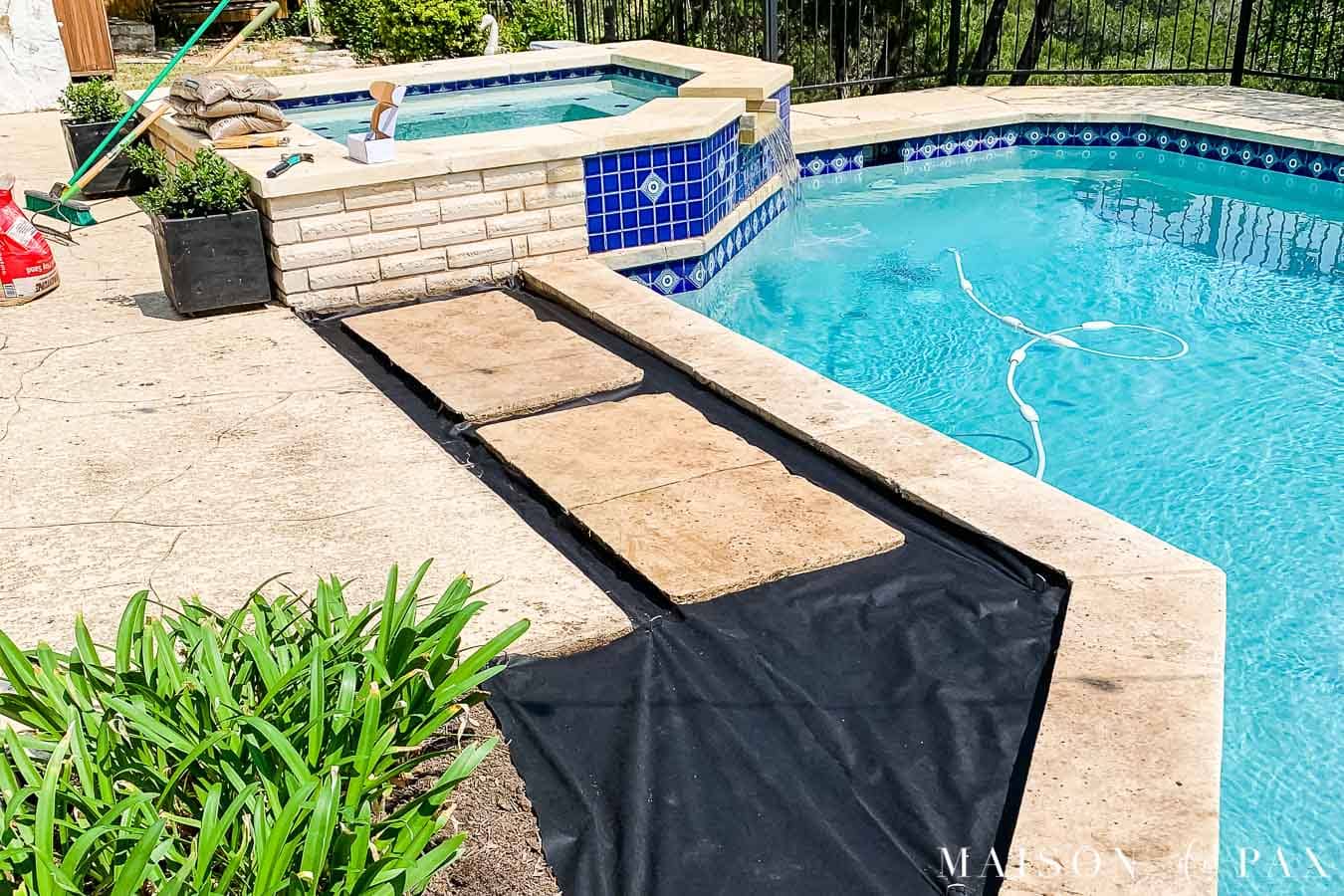
4. Lay, level, and tamp sand.
Lay approximately 1″ of sand across the surface. Use a long level to check that it is flat and tamp down until it is firm.
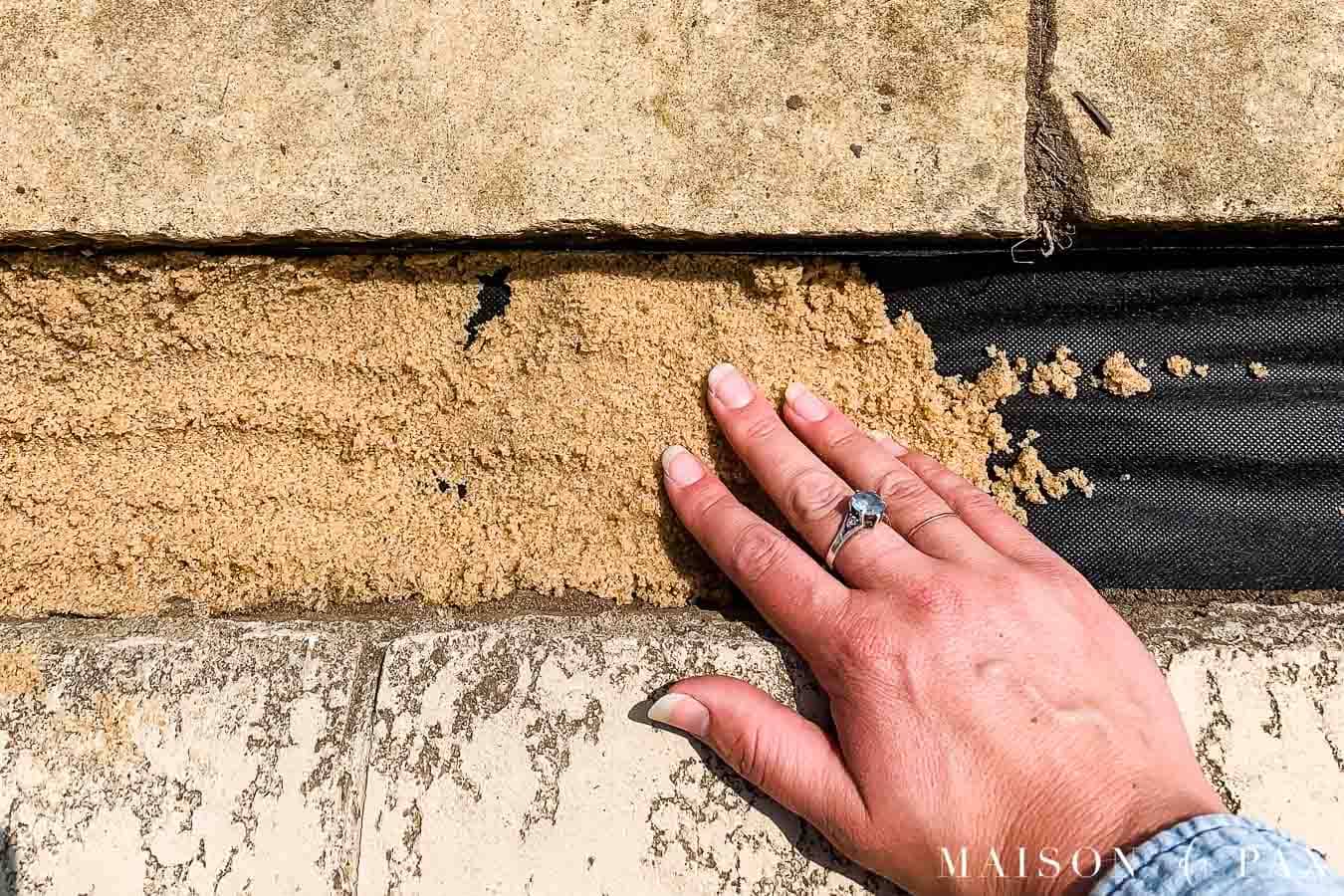
4. Lay, level, and tamp crushed granite.
It may start to feel tiresome at this point, but layers are key to a strong sub base that drains properly. Lay approximately 1/2 to 1″ of decomposed granite across the surface. Spread as evenly as possible with a rake, then use a long level to check that it is flat and tamp down until it is firm.
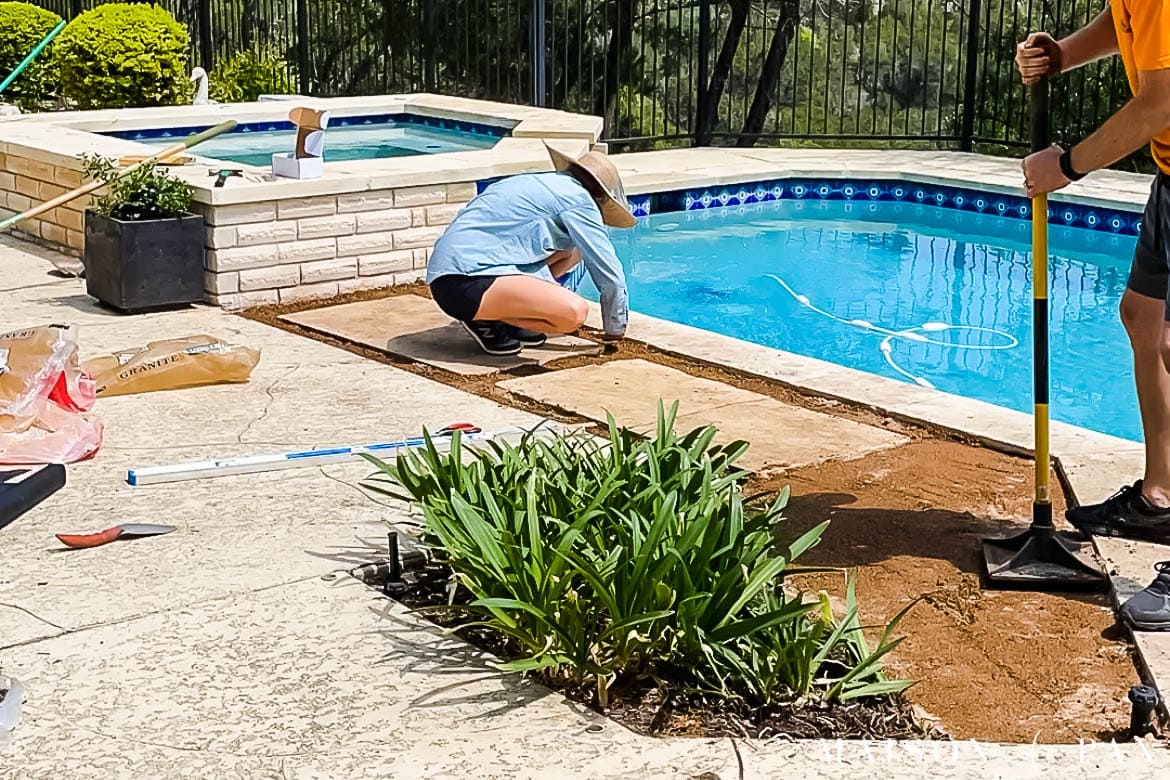
6. Lay pavers.
Be extra sure that the spots for the stepping stones are level or you may (as we did) crack one of your stones.
Note: as mentioned, we followed these same basic steps listed above about a year ago when we laid the limestone pavers. This time, we did these steps around the pavers in preparation for the turf.
7. Stretch turf over area and secure at one end.
Depending on the size and shape of your space, you may have to plan for the best way to stretch your turf in order to produce the least amount of seams.
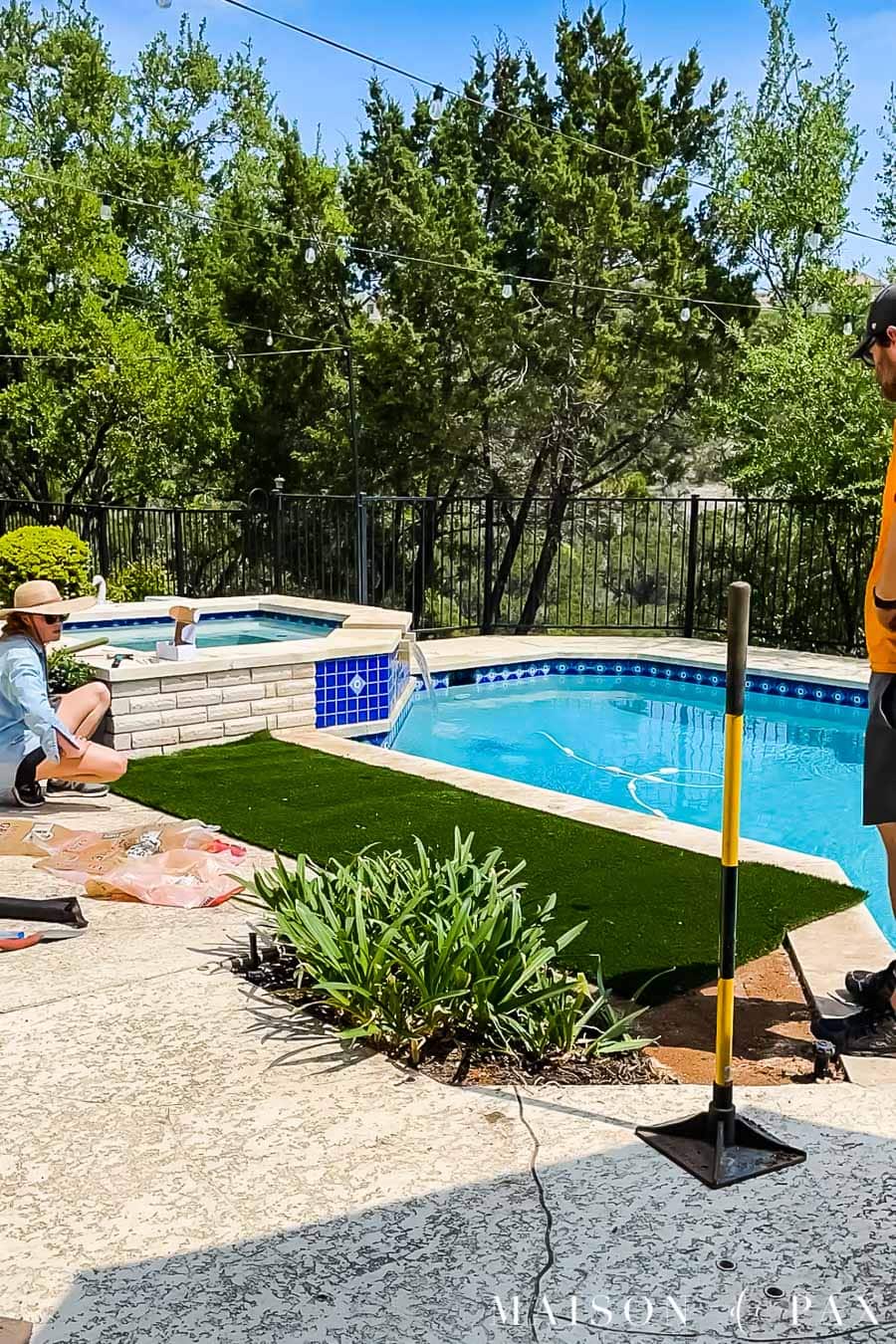
Then secure the turf at one end with landscape staples and roll the rest out over the space. To secure, use a hammer to tap the landscape staple through the backside of the turf at an angle. You may have to separate the synthetic turf blades with your fingers to get the staple pressed fully against the turf backing so it won’t be seen.
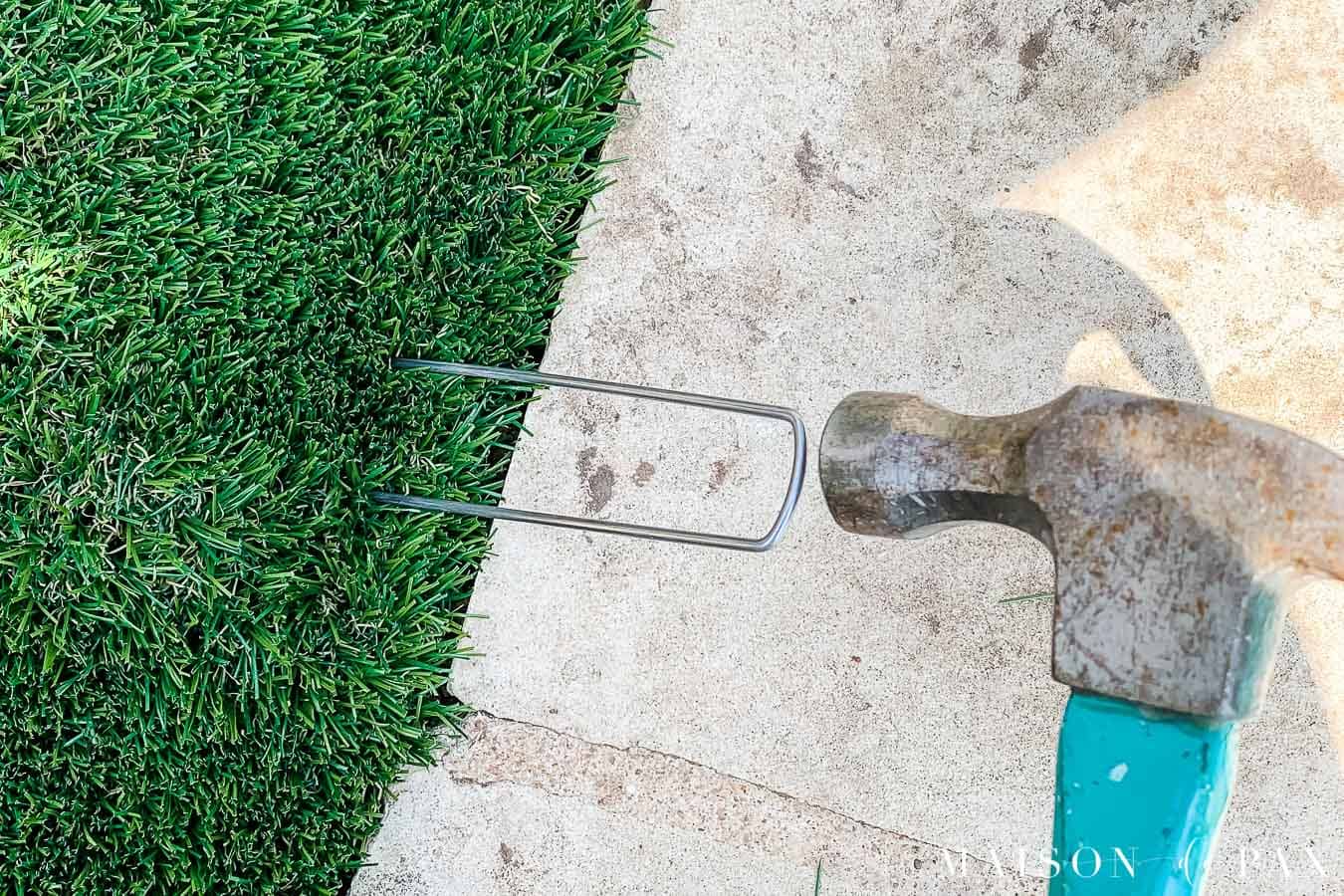
8. Cut out for pavers, securing as you go.
Stretch the turf tightly against the first paver to avoid wrinkles and secure with a landscape staple. Then, using sharp kitchen sheers or scissors, cut right along the edge of the stone. As you cut around the paver, secure with landscape staples every 6-12 inches (or closer if it seems necessary, like at a corner).
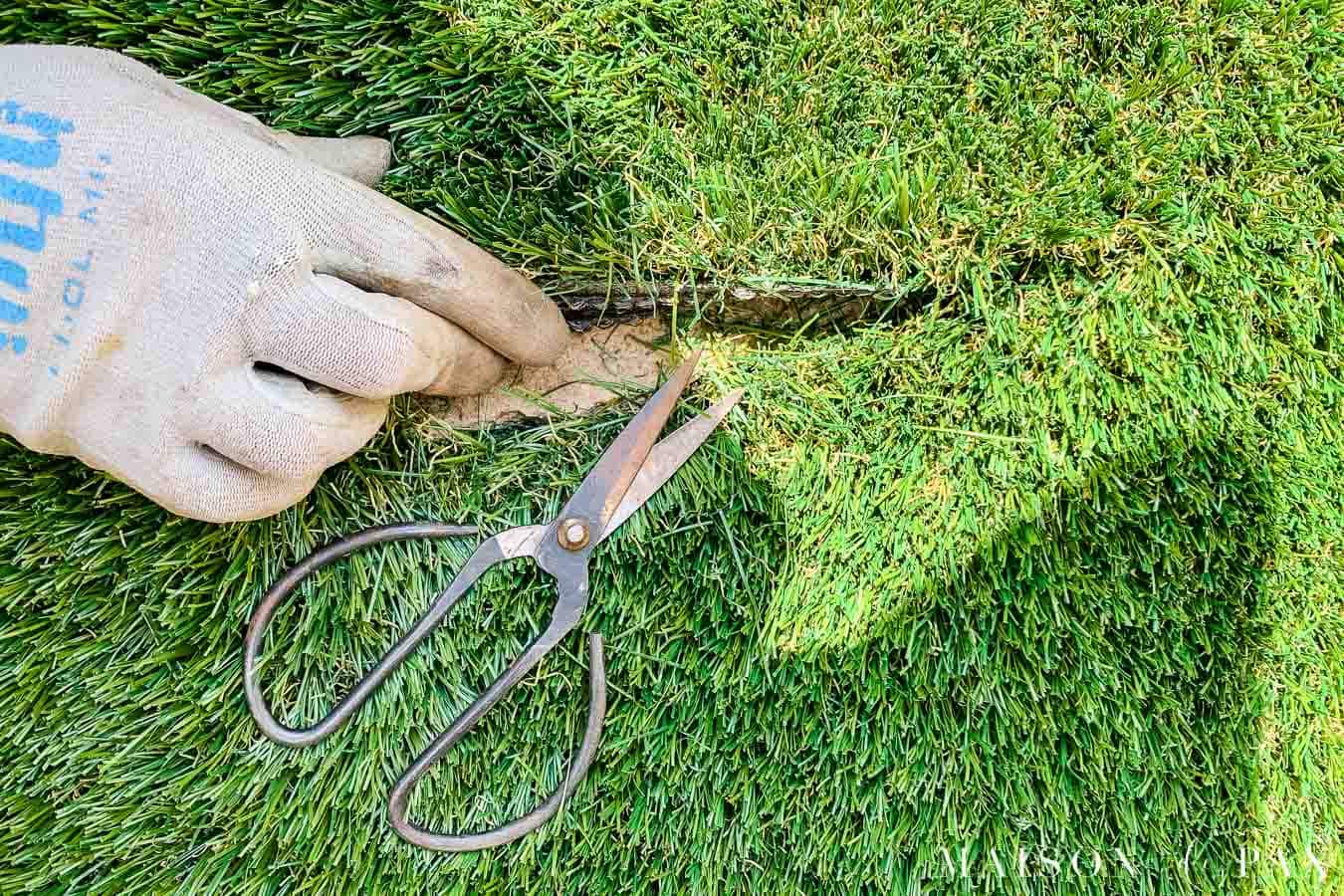
9. Secure perimeter and trim excess.
Once the turf has been secured around the pavers, stretch it out to the edges of your walkway or space and trim the excess turf. Secure with sod staples every 6-24 inches, as needed.
10. Sprinkle sand over turf.
The final step to give your artificial grass a spring like real grass is to work sand into it from the top. For a large yard, you probably ought to use a drop spreader and stiff bristled broom, but for our small section we just worked in the sand by hand.
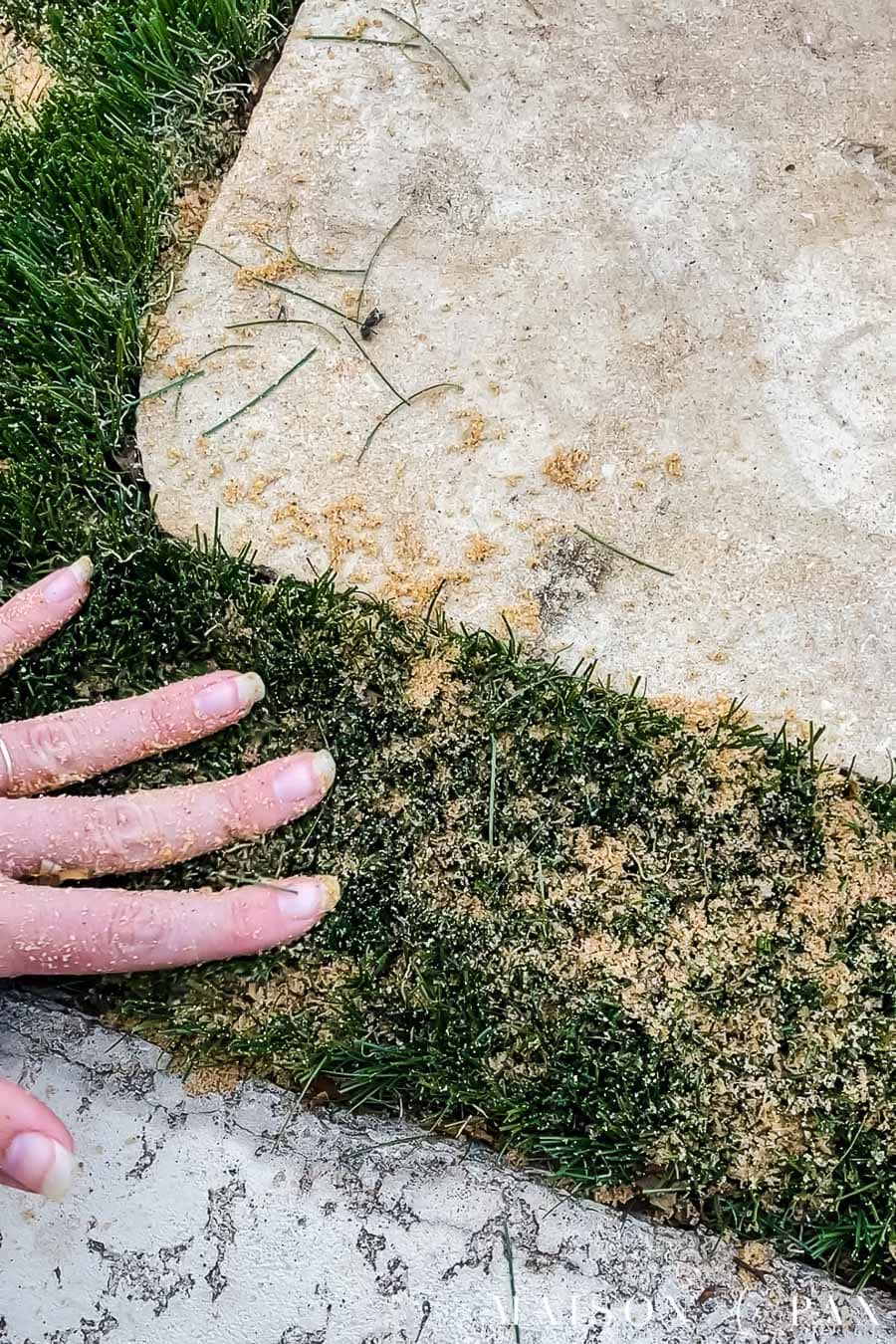
FAQs on Artificial Grass
What should I put down before installing artificial grass?
So many people asked what is the best base to put under artificial grass. The important thing is that it has proper drainage and security. For that, a mix of crushed granite and sand as described above seems to be a good DIY-able solution.
How do you install artificial grass strips between pavers?
It’s a good question. Could I just use strips between the pavers rather than laying out a whole roll and cutting the paver shape out? We chose not to do that because the edges of the turf can roll and even with seam tape, the seams can sometimes show…
We decided the less edges and seams we had the better the turf would look. And hopefully it would be less likely to come up. With the nature of this high-traffic area by the pool, we wanted to be sure our turf wouldn’t move!
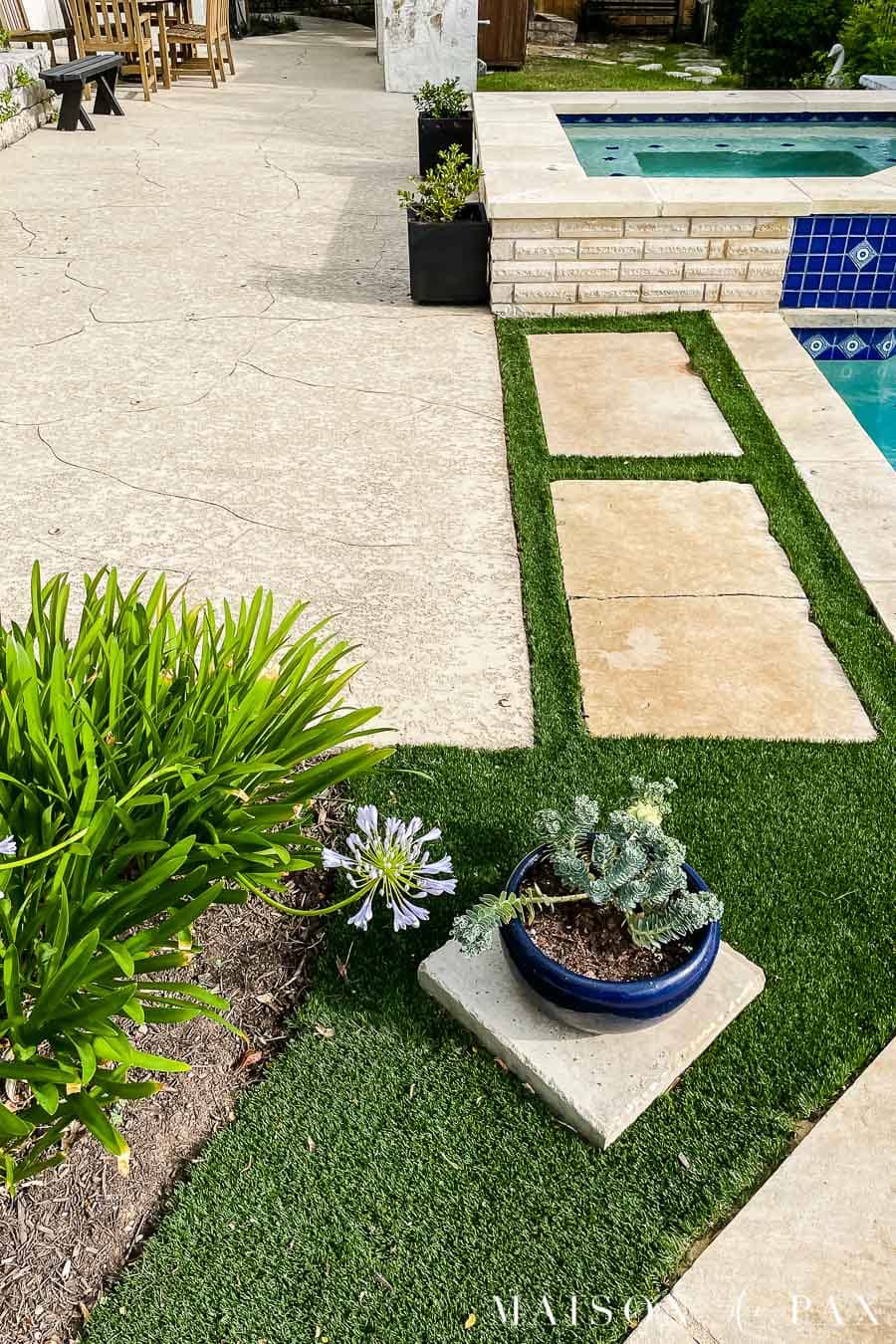
Other Outdoor DIY Projects
Looking for more than artificial turf installation? How about some of these sweat equity outdoor projects…
Be sure to pin this for later!
